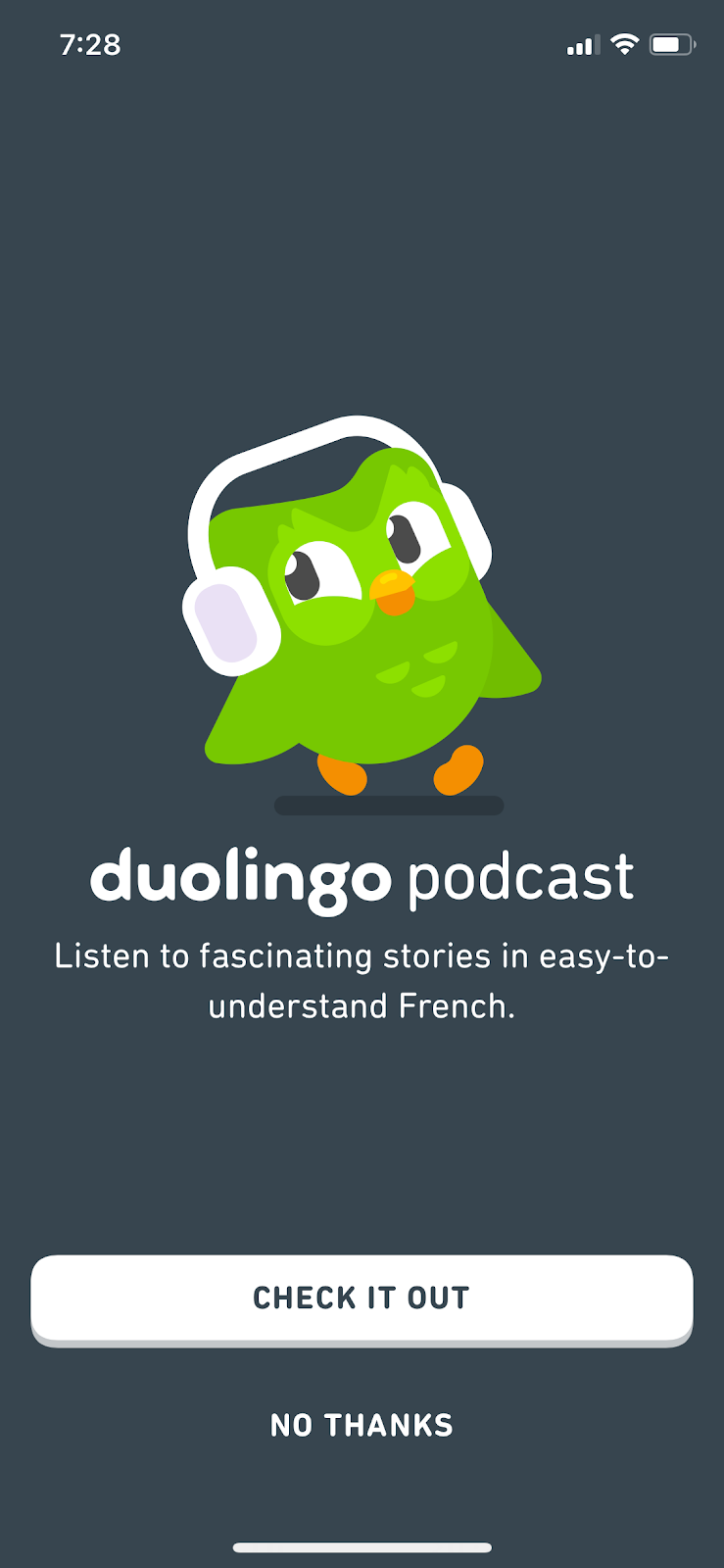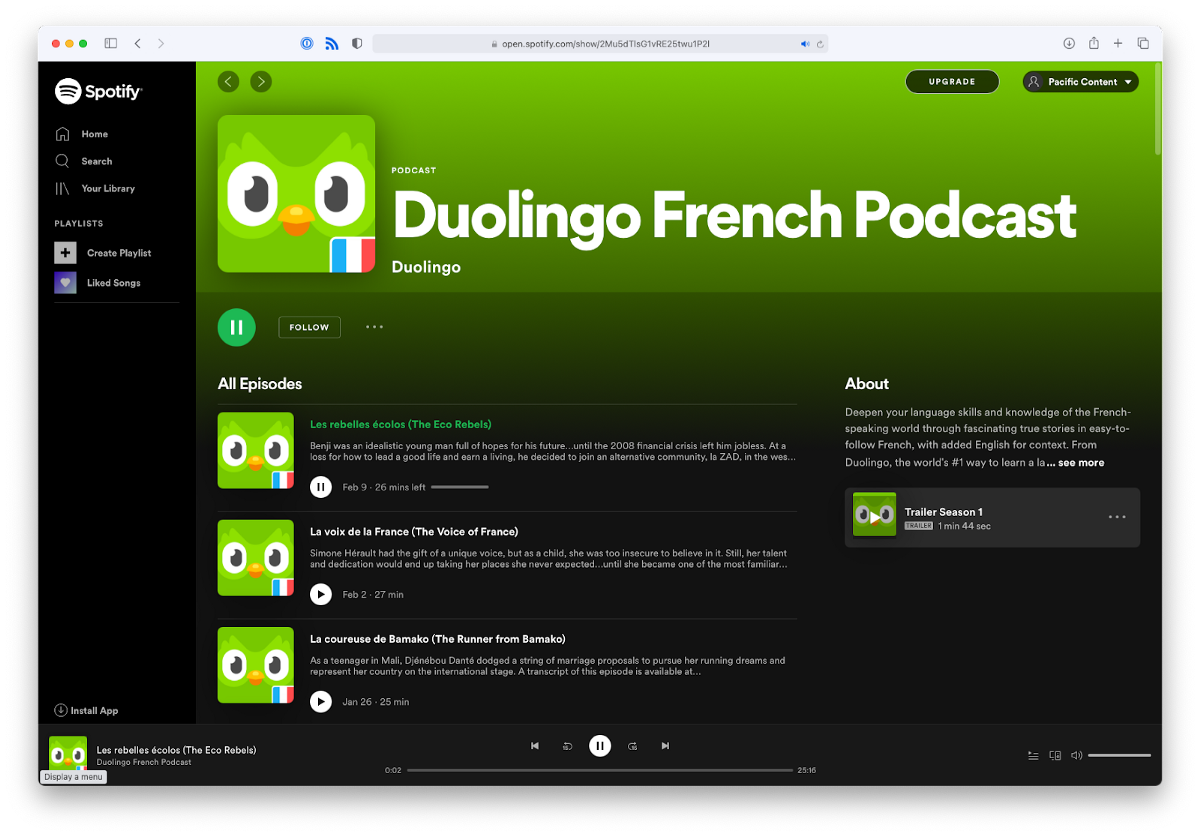Two of my favourite words in podcasting are, “only we.”
It’s a phrase I first heard from Tom Webster, who got it from Mark Schaefer. I love “only we” because it forces podcasters (especially brands) to think about the importance of creative differentiation. It raises questions like:
- What stories can we tell that nobody else can tell?
- What guests can we access that nobody else can access?
- What topic or subject are we uniquely qualified to talk about?
- What point of view can we share that’s uniquely ours?
- What is the show only we can make?”
Your show’s “only we” informs your promise to listeners. It’s at the core of your show’s unique value proposition. And when done well, “only we” can become your moat.
And here’s the thing: “only we” isn’t just about the content choices you make. It should also inform how you market your podcast.
Podcast marketing superpowers
“Only we” is a great way to think about podcast marketing. Start by asking yourself, “How can we let prospective listeners know about our show?” Then ask, “Which of those marketing channels are exclusive to us?”
I’m not talking about your brand’s social accounts. Everyone has social accounts.
I’m not talking about your company’s website. Every company has a website.
I’m not talking about your email list. Every company has an email list.
Instead, I’m talking about your podcast marketing superpowers: unique owned channels that nobody else has, and nobody else gets to use.
Let’s look at a few examples.
In-app messaging
Duolingo is a language-learning website and mobile app with around 40 million monthly active users. They also offer a roster of podcasts, many of which regularly appear on the Apple Podcasts Education charts.
Duolingo drives sampling and consideration of their podcasts directly from within their own smartphone apps:


Only Duolingo gets to market podcasts inside the Duolingo app.
McAfee took a similar approach by marketing Hackable? inside their McAfee Mobile Security app. Tapping the link brought users directly to Hackable? in their device’s built-in podcast app. Only McAfee gets to market podcasts inside McAfee Mobile Security.
Another example: when Mozilla launched IRL: Online Life is Real Life, they used an in-app messaging feature within Firefox called snippets to introduce Firefox users to their new podcast:

It wasn’t just at launch, either. Mozilla continued to use snippets to market specific episodes of IRL. Only Mozilla gets to market podcasts inside Firefox.
In-store retail marketing
Trader Joe’s has 500+ stores and 50,000 employees. They put their retail footprint to good use when launching their own original podcast, Inside Trader Joe’s. Their in-store marketing reached prospective listeners in a highly relevant context with marketing messages that match the company’s tone and brand voice:



Only Trader Joe’s gets to market podcasts in Trader Joe’s stores.
Similarly, Charles Schwab has hundreds of retail branches. They use digital branch signage to market their original podcasts, including Choiceology with Katy Milkman.
Of course, signage on its own won’t get the job done. Podcasts travel by word of mouth, and personal recommendations are still one of the primary modes of new podcast discovery. In-store signage may help with awareness of your podcast, but signage plus a recommendation from a helpful human is where the real magic happens. That’s why Schwab does such a great job of marketing their podcasts inside their company. Employees are in a great position to act as word-of-mouth advocates for Schwab’s podcasts because they know the shows’ benefits and can recommend relevant episodes to customers and prospects.
One more example of in-store podcast marketing:
Love this.
Out-of-home
Citrix is a software company. Citrix Cycle is a bike-share program in Raleigh, NC, sponsored by Citrix.
Who gets to advertise their podcast at the Citrix Cycle stations? You guessed it: only Citrix.


These are high visibility placements, and an amazing example of how brands can help grow the denominator in podcasting.
Physical products
SciMar is a life sciences company working on the prevention and treatment of type 2 diabetes. They also sell a supplement called NuPa Daily. When SciMar launched their podcast Inside the Breakthrough, they promoted it on the physical packaging:

Only SciMar can promote a podcast on the physical packaging of NuPa Daily.
High-traffic web pages
As Jay Acunzo points out, many podcasters miss an opportunity with their own websites:
Smart podcast marketers know exactly how to use high-value real estate on their websites. For example, Mailchimp offers listeners a variety of entrepreneurship-focused podcasts under its Mailchimp Presents banner.
Look at how prominently Mailchimp markets podcasts using two of the highest-trafficked parts of their own site: the front page and login screens.


This is the opposite of hiding links to your brand’s podcast in the junk drawer section of your site’s mega menu.
This isn’t just a marketing tactic. It’s a posture that says, “We made a show for you. It’s a real show. We’re proud of it. We think you’ll like it. We hope you’ll check it out.”
These are just a few examples. Every brand has its own mix of unique owned channels. What works for Charles Schwab won’t necessarily work for Ford Motor Company or vice versa.
One of my favourite parts of working at Pacific Content is helping brand marketers identify and unlock their own audience development superpowers.
What are the “only we” marketing channels for your podcast? What’s in your toolkit that nobody else gets to use?
Sign up for the Pacific Content Newsletter: audio strategy, analysis, and insight in your inbox.




